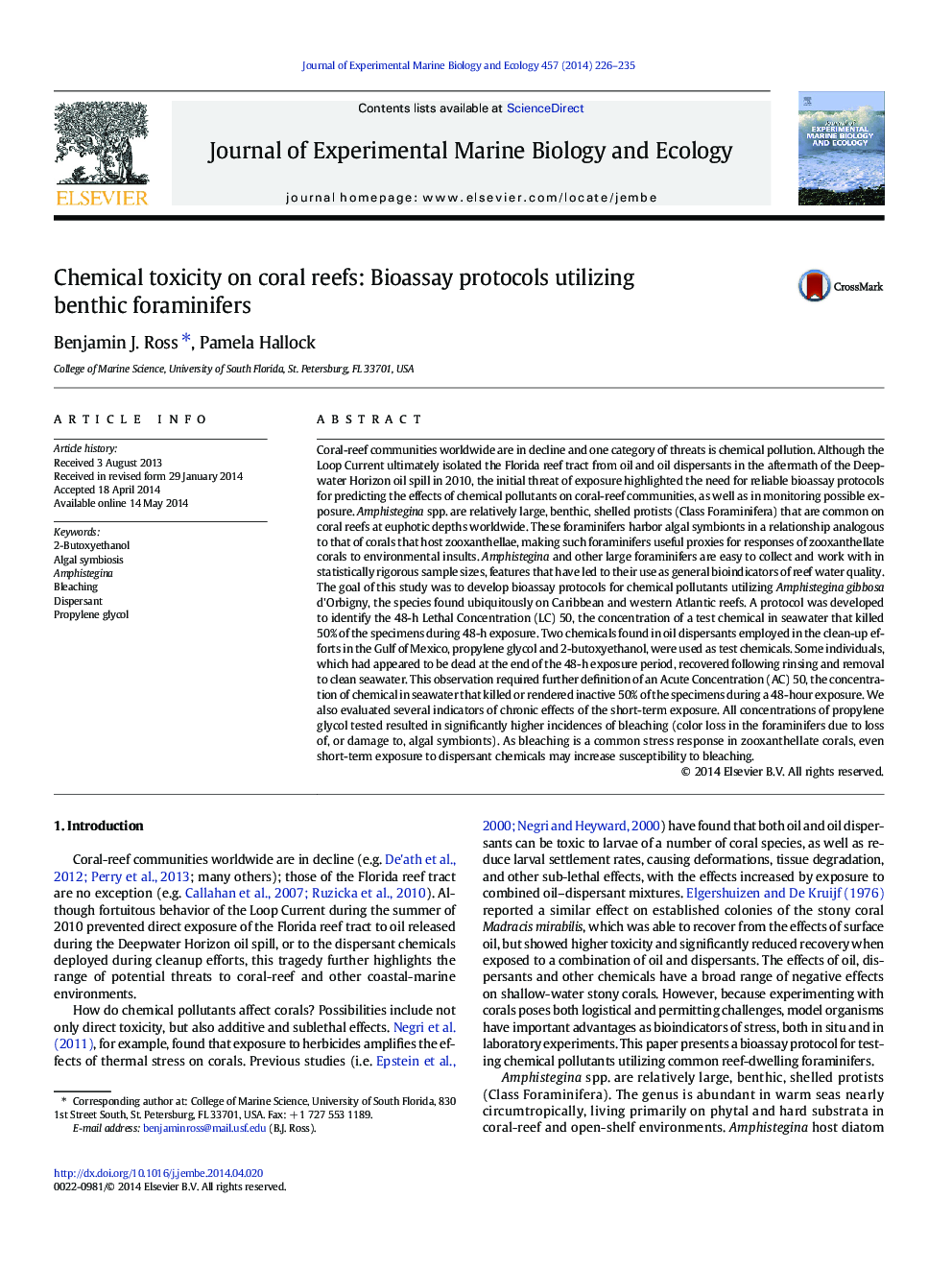| کد مقاله | کد نشریه | سال انتشار | مقاله انگلیسی | نسخه تمام متن |
|---|---|---|---|---|
| 6304232 | 1618418 | 2014 | 10 صفحه PDF | دانلود رایگان |
عنوان انگلیسی مقاله ISI
Chemical toxicity on coral reefs: Bioassay protocols utilizing benthic foraminifers
ترجمه فارسی عنوان
مسمومیت شیمیایی روی صخره های مرجانی: پروتکل های آزمایش زیستی با استفاده از فروامینفورهای بتنی
دانلود مقاله + سفارش ترجمه
دانلود مقاله ISI انگلیسی
رایگان برای ایرانیان
کلمات کلیدی
موضوعات مرتبط
علوم زیستی و بیوفناوری
علوم کشاورزی و بیولوژیک
علوم آبزیان
چکیده انگلیسی
Coral-reef communities worldwide are in decline and one category of threats is chemical pollution. Although the Loop Current ultimately isolated the Florida reef tract from oil and oil dispersants in the aftermath of the Deepwater Horizon oil spill in 2010, the initial threat of exposure highlighted the need for reliable bioassay protocols for predicting the effects of chemical pollutants on coral-reef communities, as well as in monitoring possible exposure. Amphistegina spp. are relatively large, benthic, shelled protists (Class Foraminifera) that are common on coral reefs at euphotic depths worldwide. These foraminifers harbor algal symbionts in a relationship analogous to that of corals that host zooxanthellae, making such foraminifers useful proxies for responses of zooxanthellate corals to environmental insults. Amphistegina and other large foraminifers are easy to collect and work with in statistically rigorous sample sizes, features that have led to their use as general bioindicators of reef water quality. The goal of this study was to develop bioassay protocols for chemical pollutants utilizing Amphistegina gibbosa d'Orbigny, the species found ubiquitously on Caribbean and western Atlantic reefs. A protocol was developed to identify the 48-h Lethal Concentration (LC) 50, the concentration of a test chemical in seawater that killed 50% of the specimens during 48-h exposure. Two chemicals found in oil dispersants employed in the clean-up efforts in the Gulf of Mexico, propylene glycol and 2-butoxyethanol, were used as test chemicals. Some individuals, which had appeared to be dead at the end of the 48-h exposure period, recovered following rinsing and removal to clean seawater. This observation required further definition of an Acute Concentration (AC) 50, the concentration of chemical in seawater that killed or rendered inactive 50% of the specimens during a 48-hour exposure. We also evaluated several indicators of chronic effects of the short-term exposure. All concentrations of propylene glycol tested resulted in significantly higher incidences of bleaching (color loss in the foraminifers due to loss of, or damage to, algal symbionts). As bleaching is a common stress response in zooxanthellate corals, even short-term exposure to dispersant chemicals may increase susceptibility to bleaching.
ناشر
Database: Elsevier - ScienceDirect (ساینس دایرکت)
Journal: Journal of Experimental Marine Biology and Ecology - Volume 457, August 2014, Pages 226-235
Journal: Journal of Experimental Marine Biology and Ecology - Volume 457, August 2014, Pages 226-235
نویسندگان
Benjamin J. Ross, Pamela Hallock,
